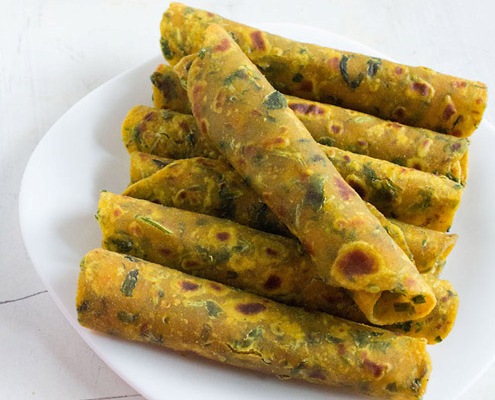Fenugreek is a white-flowered, herbaceous plant that is cultivated in countries across the globe. The seeds of the plant are a common ingredient in an array of Indian dishes, regularly being ground and used in curry powder. India is the largest cultivator of the plant, with the state of Rajasthan producing no less than 80% of the country’s output.
Fenugreek is known as ‘methi’ in India and although the seeds are the most popular part of the plant, the leaves are also used as a fresh or driedherb. The plant’s sprouts and microgreens can also be eaten.
The seeds of fenugreek are a yellow-amber colour and are used both whole and powered in an assortment of India’s pickles, daals, spice mixes and vegetable dishes. It is not uncommon for cooks to roast the seeds before incorporating them within the dishes, as this reduces bitterness and enriches the flavour. Fresh leaves are also used to add flavour to many Indian curries, while the plant’s sprouted seeds andmicrogreens are a common ingredient in many Indian salads.
When fenugreek is harvested for its microgreens it is referred to as ‘samudramethi’ in places such as Mumbai and Maharashtra. It is given this name because the plant is typically grown next to the ocean, with the Sanskrit word for ocean being ‘samudra.’
If you stroll around any Indian market you will no doubt come across plenty of fenugreek in all forms. When sold as a vegetable, farmers keep the roots on the younger plants when harvesting them, and then sell them in small bunches. Any soil is washed offthe bunches, as doing this extends their shelf life.
Popular Indian snacks that have fenugreek as an ingredient include MethinaGota (fried fenugreek dumplings), Khakhra (thin crackers flavoured with fenugreek and typically served with breakfast), and Muthia (a sausage-shaped, vegan dish made with chickpea flour, fenugreek and other ingredients).
Other common dishes include methisaag (fenugreek and spinach), aloomethi (fenugreek cooked with potatoes) and, as an accompaniment to main meals, methi roti (a thin Indian bread flavoured with fenugreek).
Fenugreek, in all its forms, has a very distinct flavour. But it isn’t just eaten for its flavour, as fenugreek is also known to have an array of health benefits, too. Fenugreek contains iron, protein, fibre, Vitamin C, potassium, niacin and alkaloids. When consumed, the plant can help reduce cholesterol, aid digestion, reduce cardiovascular disease, ease a number of skin conditions, and be a remedy for sore throats and the flu.
In fact, fenugreek can also be used externally, with many women incorporating it within their face masks to reduce any blemishes. People also make a paste from fenugreek and apply it externally to lessen the visibility of scars. Finally, boiled fenugreek seeds can be soaked overnight in coconut oil and then applied to the scalp to help prevent hair loss.
Whether you eat fenugreek because it’s good for you, or simply because you enjoy the flavour, you can be sure to sample it in perfect form in one of London’s fine dining Indian restaurants.

